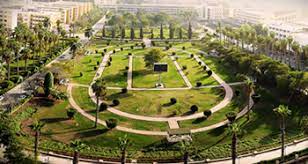
Cairo University, known as the Egyptian University from 1908 to 1940, and King Fuad I University from 1940 to 1952, is Egypt's premier public university. Its main campus is in Giza, immediately across the Nile from Cairo. It was founded on 21 December 1908;[1] however, after being housed in various parts of Cairo, its faculties, beginning with the Faculty of Arts, were established on its current main campus in Giza in October 1929. It is the second oldest institution of higher education in Egypt after Al Azhar University, notwithstanding the pre-existing higher professional schools that later became constituent colleges of the university.

Mansoura University was founded in 1972 in Mansoura city, Egypt. It is in the middle of the Nile Delta. It is one of the biggest Egyptian universities and has contributed much to the cultural and scientific life in Mansoura and Egypt. According to Times Higher Education (THE) (Edition: 2020), the ranking of Mansoura University is 2dn ranking in Egyptian.

Ain Shams University, as the third Egyptian university, was founded in July 1950 under the name of "Ibrahim Pasha University". It participated with the two earlier universities, "Cairo University" (Fua'd the 1st ) and "Alexandria University" (Farouk the 1st) in fulfilling the message of universities and meeting the increasing demand of youth of higher education. When it was first established, Ain Shams University comprised a number of distinguished faculties and academic institutes, which were later developed into university. After the revolution of the 23 rd of July 1952, it was suggested that Egyptian universities be given names that were strongly linked with the roots and historical landmarks of the country. The emblem of the university, the obelisk and two hawks, establishes a link between the name and the ancient history of the university. The obelisk stands for the house of life at the city of "O'n", whereas the two hawks are symbolic of Horus, the Egyptian god at that time. The university is now located in the area of the Zaafaran Palace, built during the regime of Khedive Ismail. The Palace was so named because the area surrounding it was famous for saffron (in Arabic Zaafaran) plantations.

